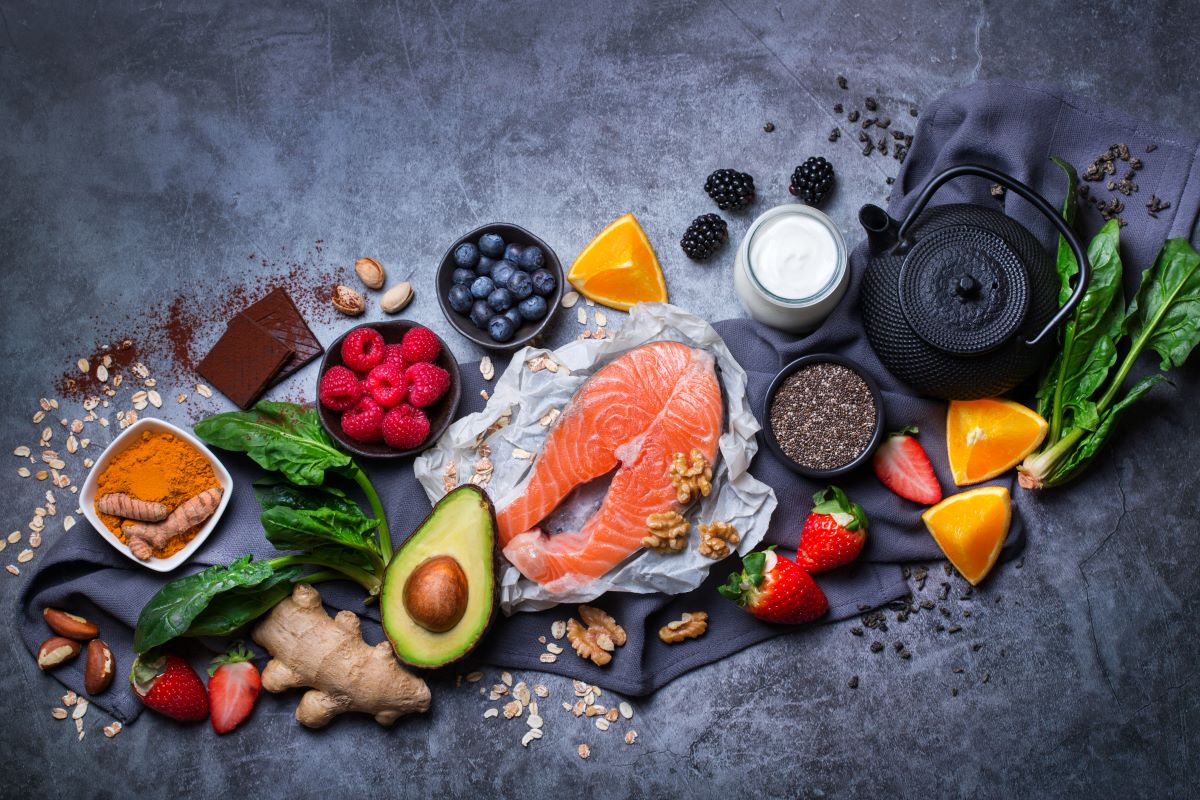Researchers from Semmelweis University in Budapest, Hungary, along with experts at the Hungarian Dietetic Association, looked at 1639 scientific publications, finally reviewing the most relevant 134 to identify the best, balanced diet for a healthy menopause.
As life expectancy increases, there will be 1.2 billion menopausal women worldwide by 2030 – the researchers wrote. Most often, women reach menopause between the ages 45-55, after 12 months without a period. However, hormonal changes such as a decline in the production of one of the main oestrogens, oestradiol, start years beforehand with potential menstrual irregularities (perimenopause).
The diet is as follows:
– less than 5g of salt a day
– at least 300g of vegetables and 200g fruit every day (distributed in 5 portions)
– 1–1.2g of protein/kg of body weight daily, half of which should come from plant sources such as soybeans, seitan, lentils, beans, chickpeas, quinoa or nuts; otherwise, low-fat protein sources (e.g., poultry, low-fat dairy products) are preferred
– no more than 350–500 g boiled/steamed/fried red meat (e.g., beef and pork) per week
– at least two servings/week (100–120 g/occasion) of fish with fatty meat
– intake of processed meat products should be occasional, in small quantities
– eat legumes (beans, peas, lentils, chickpeas, or soy) at least once a week
– 30g unsalted nuts/day
– one meat-free day a week
– the daily amount of dietary fibre should be 30–45 g, preferably mainly whole grains
– moderate fat consumption is essential – vegetable fats such as sunflower oil for frying and olive, rapeseed, linseed, soybean oil, etc., are recommended for salad dressings
– fluid intake (mainly water) is 33mL/kg of body weight daily, evenly spread throughout the day
– simple, fast-acting sugars such as cakes, sweets or sweetened soft drinks should be avoided
– adequate intake of calcium, vitamin D, vitamin C, and B vitamins, n-3 LCPUFA and omega-3 fatty acids
– consuming dairy products equivalent to the calcium content of half a litre of milk daily
– no smoking, less alcohol
– regular physical activity is essential
The study, recently published in Nutrients, states that women gain about 6.8 kilograms between ages 50 and 60, regardless of their starting weight, race, or ethnicity. As of 2016, the World Health Organization reported that 55% of women are overweight or obese.
 Weight gain can be one of the first symptoms of menopause, experienced by 60–70% of middle-aged women. Oestrogen plays a role in regulating metabolism and body fat distribution. Its decrease can lead to fat redistribution, with more fat deposited around the abdomen (visceral fat). Hormonal changes can also affect neurotransmitters in the brain that regulate appetite and mood, and they may trigger cravings for specific foods, especially those high in sugar or fat, to temporarily boost mood or energy levels.
Weight gain can be one of the first symptoms of menopause, experienced by 60–70% of middle-aged women. Oestrogen plays a role in regulating metabolism and body fat distribution. Its decrease can lead to fat redistribution, with more fat deposited around the abdomen (visceral fat). Hormonal changes can also affect neurotransmitters in the brain that regulate appetite and mood, and they may trigger cravings for specific foods, especially those high in sugar or fat, to temporarily boost mood or energy levels.
“With age, metabolism naturally slows down, the body burning fewer calories at rest. The decline in oestrogen during menopause can further contribute to a decrease in metabolic rate, making it easier to gain weight,” – says Dr. Erzsébet Pálfi, associate professor at the Department of Dietetics and Nutritional Sciences of Semmelweis University.
Dr. Pálfi, who is also a co-author of the study, adds that creating a calorie deficit is crucial during diet-based obesity treatment.
The recommended weight loss rate is about 0.5–1kg/week, primarily from fat while preserving muscle mass. This typically translates to reducing daily calorie intake by 15–30% and consuming around 25 kcal/kg of body weight per day.
(Peri)menopausal women commonly experience hot flushes, night sweats, headaches, and joint pains. They may also feel more irritable, emotionally unstable, and have difficulty concentrating. Around 75 to 80% of women go through menopause-related symptoms, with 20-30% experiencing more severe effects. These symptoms vary in intensity and frequency but are often influenced by lifestyle.
 “Our recent review found that losing just 5 kilograms of weight can make hot flushes 30% more bearable. Regular exercise also supports metabolic health and can lessen the severity of hot flushes. During the transformational years, several changes can occur in the female body – of which weight gain and hot flushes might be the most apparent ones, but they can bring more risks if not kept under control,” – explains Alíz Erdélyi, the first author of the study, also the secretary general of the Hungarian Dietetic Association and a visiting lecturer at Semmelweis University’s Department of Dietetics and Nutritional Sciences.
“Our recent review found that losing just 5 kilograms of weight can make hot flushes 30% more bearable. Regular exercise also supports metabolic health and can lessen the severity of hot flushes. During the transformational years, several changes can occur in the female body – of which weight gain and hot flushes might be the most apparent ones, but they can bring more risks if not kept under control,” – explains Alíz Erdélyi, the first author of the study, also the secretary general of the Hungarian Dietetic Association and a visiting lecturer at Semmelweis University’s Department of Dietetics and Nutritional Sciences.
With the increased volume of visceral fat comes some adaptive changes in the body, including the development of new blood vessels and higher excess production of free oxygen radicals, triggering an intense immune response. Immune cells can accumulate in the body fat, which induces local and low-grade systemic inflammation, leading to vascular damage.
Menopausal women, therefore, can more easily develop cardiovascular problems. They also become more prone to tumours (especially hormone-sensitive breast cancer), insulin resistance, type 2 diabetes (T2DM), and osteoporosis.
Though not entirely eliminating symptoms or associated conditions, lifestyle changes during this time can delay their onset, make them more manageable, and improve daily life.
Photo: Balint Barta – Semmelweis University; Cover photo: Envato Elements – Lucigerma; Illustration – Envato Elements – antoninavlasova



